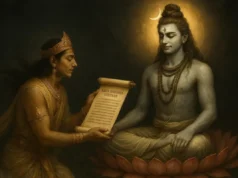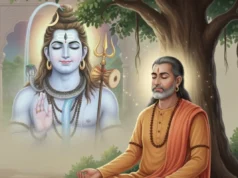January marks the beginning of the New Year and, according to the Hindu calendar, the sacred month of Paush, followed by the highly revered month of Magh. The calendar for Hindu Festivals and Vrats in January 2026 is exceptionally rich, featuring major events like Makar Sankranti, Magh Amavasya, and Basant Panchami. These auspicious days hold special significance in the list of Hindu Festivals and Vrats in January 2026, offering devotees a powerful opportunity to perform Sadhana (spiritual practice) and seek the blessings of the Divine. This comprehensive guide provides a definitive list of all the significant dates, rituals, and the deeper spiritual meanings behind each festival celebrated during this sacred period.
Complete Calendar: Hindu Festivals and Vrats in January 2026
The table below provides a full list of all fasts and festivals falling in January 2026, marking the transition from the Paush Purnima to the Magh Purnima cycle:
| Date | Day | Festival / Vrat | Significance |
|---|---|---|---|
| 1 January | Thursday | English New Year 2026 Begins | Global Holiday |
| 3 January | Saturday | Paush Purnima, Magh Snan Starts | Holy dip in Ganga, marks end of Paush month |
| 6 January | Tuesday | Shri Ganesh Sankasht Chaturthi | Fast for Lord Ganesha to remove obstacles |
| 13 January | Tuesday | Lohri Festival | Celebrated in North India, marking winter harvest |
| 14 January | Wednesday | Makar Sankranti | Sun enters Capricorn (Makara), marking the Uttarayan |
| 18 January | Sunday | Magh/Mauni Amavasya | Day of complete silence (Mauna) and Tarpana for ancestors |
| 19 January | Monday | Gupt Navratra Starts | Auspicious 9-day period for Tantric Goddess worship |
| 21 January | Wednesday | Gauri Tritiya / Gauntari | Vrat for marital bliss and progeny |
| 22 January | Thursday | Til Kund Chaturthi | Worship of Ganesha and Shiva using sesame seeds (Til) |
| 23 January | Friday | Basant Panchami, Lakshmi-Saraswati Poojan | Saraswati Puja, marking the start of Spring |
| 25 January | Sunday | Arogya Putra Saptami, Rath Saptami | Sun God Surya worship for health and vitality |
| 26 January | Monday | 77th Republic Day, Bhishmashtami | National Holiday, Day of Bhishma Pitamah’s passing |
| 27 January | Tuesday | Gupt Navratra Ends | End of the secret 9-day worship of the Divine Mother |
| 29 January | Thursday | Bhishma Dwadashi, Til Dwadashi | Worship of Vishnu and offering of sesame seeds |
Paush Purnima (January 3rd) and the Start of Magh Snan
Paush Purnima marks the end of the Paush month and is considered a significant day for performing the Purnima Snan (ritual bath). This day also marks the beginning of the highly auspicious Magh Snan period, which continues until Magh Purnima. Taking a holy dip in sacred rivers like the Ganga or Yamuna on this day is believed to relieve devotees of all past sins and can even grant moksha (salvation). Additionally, many devotees perform the Satyanarayana Vratam on Paush Purnima.
Makar Sankranti 2026 Significance and Rituals (January 14th)
Makar Sankranti is a festival that celebrates the Sun’s transition into the zodiac sign of Capricorn (Makara). This celestial event also signifies the commencement of the Sun’s northward journey, known as Uttarayan, which is considered an extremely propitious phase in Hindu beliefs.
- Puja and Snan: Devotees perform Surya Puja (worship of the Sun God) and take a holy dip in sacred rivers like the Ganga to cleanse sins and gain spiritual merit.
- Charity: Donating food grains, especially sweets made from sesame (til) and jaggery (gur), is a core ritual believed to yield divine blessings and peace.
According to traditional Hindu almanacs, Uttarayan marks the return of a period deemed favorable for all pious activities, as inauspicious activities are generally avoided in the preceding month of Paush.
Magh Amavasya 2026 Importance (Mauni Amavasya – January 18th)
Magh Amavasya is revered as one of the most auspicious Amavasya (new moon) days, often falling in the month of January or February. It is also known as Mauni Amavasya, where devotees observe a complete vow of silence (Mauna Vrat) to acquire the purity of speech and control their anger.
- Tarpana and Snan: Taking a holy dip in the Ganga on this day is considered the holiest, as it is believed the river water transforms into nectar. This Magh Snan and performing Pitru Puja or Tarpana (ancestral rites) are essential rituals to gain inner peace and alleviate Pitru Dosha.
Basant Panchami 2026: Saraswati and Lakshmi Poojan (January 23rd)
Basant Panchami, also called Vasant Panchami, falls on the fifth day (Panchami) of the Shukla Paksha (waxing moon) in the month of Magh and heralds the arrival of the spring season (Basant). This festival is primarily dedicated to Goddess Saraswati, the deity of knowledge, music, and art.
- Rituals: Devotees wear yellow clothes, symbolizing the season’s vitality and the color associated with Goddess Saraswati.
- Aksharabhyasam: It is considered highly auspicious for children to begin their education or write their first letters on this day—a ritual known as Aksharabhyasam or Vidyarambham.
The calendar of Hindu Festivals and Vrats in January 2026 is a spiritual treasure trove, guiding every devotee through a month filled with opportunities for purification and devotion. By observing the powerful days like Makar Sankranti and Basant Panchami, a devotee can align their life with the cosmic rhythms of Dharma. To ensure your spiritual practice remains steadfast during this sacred period, explore traditional Hindu observances and their cultural significance that have shaped India’s timeless spirituality.
Frequently Asked Questions
1: Which is the biggest festival in January 2026?
Makar Sankranti (January 14th) is considered the most significant festival in January 2026 due to its astronomical importance, marking the beginning of the Uttarayan period.
2: What is the significance of Gupt Navratra in January 2026?
The Gupt Navratra (starting January 19th) is a secretive nine-night period dedicated to intense Tantric sadhana and the worship of the Dashamahavidya for attaining spiritual powers (siddhis). Its roots lie in the ancient Tantric traditions of Hinduism, emphasizing self-realization through devotion and disciplined spiritual practice.
3: Why is January 3rd, Paush Purnima, important?
Paush Purnima marks the beginning of the highly auspicious Magh Snan period, where a ritual bath is taken daily until Magh Purnima to cleanse the sins of the past.
For the latest updates on Ancient History, cultural insights, spiritual journeys, and other global events, visit mahakaltimes.com first.











